#paul j. mcauley
Explore tagged Tumblr posts
Text

Full moonlight in the fantasy forest (Hank Jankus for the short story "Karl and the Ogre" by Paul J McAuley, Dragon 135, July 1988)
#D&D#Dungeons & Dragons#Hank Jankus#fantasy#Dragon magazine#fae#fantasy forest#full moon#moonlight#changeling#dnd#Paul J McAuley#Karl and the Ogre#Dungeons and Dragons#TSR#1980s
182 notes
·
View notes
Text
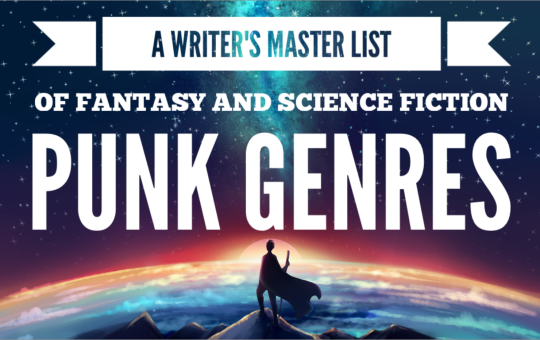
I recently started world-building for a new story idea (I know—bad when I'm supposed to be in the middle of revising my current project) and in trying to figure out the level of technology and feeling of my new world I got lost in google searches about the different punk genres.
So I decided to make a master list.
According to Wikipedia (a highly reputable source by all accounts) a punk genre can be described as “a world built on one particular technology that is extrapolated to a highly sophisticated level (this may even be a fantastical or anachronistic technology, akin to retro-futurism) a gritty transreal urban style, or a particular approach to social themes.”
There are so many (so so many) and some people roll their eyes at every new addition but I think the names and distinctions are interesting and fun (I mean, Magicpunk may just be regular fantasy, but it sounds so much cooler). I love the idea of scientific fantasy, and of blurry the lines between the sci-fi and fantasy genres. Who’s to stop you from mixing the culture of the Japanese samurai with an epic space opera in the stars?
This is an incomplete list. I've organized it by time period (loosely, because some overlap or can go anywhere). I've also provided an example of a published work (for those that have them).
Established Fantasy Punk Genres: An Incomplete List
Magicpunk/Dungeonpunk: Fantasy punk genre where the “one particular technology” that the world is build on is magic. You have trains running on lines of sorcerer-fueled energy and ships powered by wind magic and computers running on sub-dimensional energy from the demon realm. Popular examples include The Sleeping Dragon by Jonny Nexus and The War of the Flowers by Tad Williams.
Aetherpunk: Subgenre mix of Magicpunk/Dungeonpunk where the magic source of the technology is specifically the element of Aether. Often, if not always, also has Steampunk elements. The Aeronaut’s Windlass by Jim Butcher is the only example that comes to mind.
Mythpunk: A punk genre that is inspired by or incorporates myths and legends. These aren’t usually a retelling of a popular myth, but rather one that includes elements of the myth, or twists and changes the story around to it’s own ends. Popular examples would be American Gods by Neil Gaiman or Deathless by Catherynne Valente.
Stonepunk: Set in the stone age, this genre is characterized by the use of non-technology as technology, creating pseudo-tech and modern inventions with natural, basic resources like stone, wood, water, fire, clay, and rope. The Flintstones would be the best example.
Sandalpunk: Sandalpunk is on thin ice as a punk genre. Rather than being inspired or defined by a technology, it instead focuses on the period of time of the ancient world before the Middle Ages, often set in Greece or Rome. There aren’t many examples of it. But the name is cool.
Steampunk: Arguably the most popular punk genre (after Cyberpunk) featuring science fantasy stories set in Victorian era, with advanced technology powered by steam engines and clockwork mechanics. Doctor Who perhaps described it best, “The Victorian Age accelerated. Starships and missiles fueled by coal and driven by steam.” There are many examples, both in literature and film, including His Dark Materials by Phillip Pullman, Mortal Engines by Philip Reeves and The Parosol Protectorate by Gail Carriger.
Clockpunk: Close-cousin subgenre of Steampunk, characterized by a lot of clocks and inspired by the pre-steam energy period of the Renaissance and Baroque eras. Pasquale’s Angel by Paul J. McAuley is more Clockpunk than Steampunk.
Silkpunk: Silkpunk is another subgenre of Steampunk, one generation removed. While steampunk is defined by it’s Victorian era brass and steam aesthetic, Silkpunk is inspired by East Asian culture during the period of the Silk Road. Examples include The Dandelion Dynasty by Ken Liu and The Tea Master and The Detective by Aliette de Bodard.
Cattlepunk: Yet another subgenre of Steampunk, Cattlepunk is the across-the-ocean-bastard-cousin set in the wild west of early America. Cowboys, bank robberies, and train heists meet robots, warmechs, magic, and super-weapons. The Wild Wild West and Firefly verse are classic movie examples. Book examples would be the Mistborn Era II series by Brandon Sanderson and The Dark Tower series by Stephen King. (And I didn’t realize until I just did all this research but based on examples this is like my favorite punk.)
Dieselpunk: This genre is set in the aesthetic of the 1920s-1950s era and is characterized by the use of diesel-powered technology. Commonly incorporates alternate history elements, as well as themes surrounding the Great Depression and World War II. It’s been called the darker and dirtier version of Steampunk with an emphasis on air travel and combat, dirigibles, and air pirates. Examples include The Iroon Dream by Norman Spinrad, Dreadnough by Cherie Priest, and Pirate Utopia by Bruce Sterling.
Atompunk: A retro-futuristic punk genre set in during the Cold War and characterized by atomic nuclear technology, ray guns, robots, hover cars, and interdimensional travel. Atompunk often deals with the themes of nuclear power gone wrong and alternate versions of the Cold War. The most popular example of this would be the Fallout games by Bethesda.
Capepunk: Capepunk is just superhero fiction set in the modern-era world where people have powers. Example would be any superhero story ever. I just think the name’s cool.
Gothicpunk: Gothicpunk is also usually set in the modern-era, but incorporates The Goth. Generally characterized by an underworld of supernatural creatures lying in wait and secretly controlling the workings of our world where humans are but cattle. This is basically dark Urban Fantasy, but it’s popular enough to get a distinction. Anne Rice’s Interview With a Vampire is an okay example. The movies Priest and Daybreakers are much better ones.
Cyberpunk: Cyberpunk, the grandfather of all of the punk genres. Characterized by dystopian and cynical future world in which technology has brought about cultural nihilism and a crap society. Often combined with Film Noir or detective fiction. (Fantastic Noir is a fantasy version of Cyberpunk). Heroes are most prone to be some form of hacker, rebel, or antihero fight against a totalitarian police state or corporate empire oppressing the people. Examples Neuromancer by William Gibson and the movie Blade Runner.
Post-Cyberpunk: This is Cyberpunks chipper, more optimistic sibling. It has all of the vision of a scientifically advanced cyber-culture without the gritty, dark, and edgy world elements. It still share’s the Cyberpunk elements of analyzing how technology interacts and impacts with society, just without such a grimdark view of humanity. Examples would be Agent G by C.T. Phipps and The Peace War by Vernor Vinge.
Biopunk: Biopunk is Cyberpunks genetically engineered half-sibling. This punk centers around organic technology with a healthy smattering of bio-augmentation and biotechnology. Examples include In the Courts of the Crimson Kings by S.M. Stirling, West of Eden by Harry Harrison, and Wolfish Nature by Vladimir Vasilyev.
Nanopunk: Also a subgenre of Cyberpunk with characterized by the use of nanites and nanotechnology as the predominate form of technology. Examples are Tech Heaven by Linda Nagata and Micro by Michael Crichton.
Solarpunk: Solarpunk is a genre characterized by it’s environmentally friendly technology meshed with African and Asian cultures and an emphasis in community, art, and a bright solar future where humanity has found a balance between technology and nature. Can also include many elements of Biopunk, but with a much more optomistic, for-the-future-of-species-and-environment outlook. Example works include Zahrah the Windseeker by Nnedi Okorafor, Maurai by Poul Anderson, and Songs from the Stars by Norman Spinrad.
Apunkalypse: This genre is defined by the collapse of civilization where society is replaced by lawless bands of roving scavenger gangs or cities collapsing into decay or the rise of punks overthrows the rules of the past. Examples include Mad Max and Mortal Engines by Philip Reeves (which is also Steampunk, so it’s a good example of book incorporating more than one punk genre).
Desertpunk: Punk genre characterized by sand. Who doesn't love a good desert planet? Often features roaming tribes, wandering heroes, desert bandits, and sand storms. Can be combined with Cattlepunk, for a Western desert, or Apunkalypse, for an-after-the-end-of-the-world setting. Examples include Dune by Frank Herbert and Railsea by China Mieville.
Oceanpunk: This punk is set on the high seas. Often features floating cities of wood and iron lashed together and mighty nations fighting for dominion of the watery world and may also feature civilizations and cultures below the waves in underwater cities. Sometimes called Pirate Punk, because nothing breed pirate stories like ocean cities and sailing ships. Examples include The Scar by China Mieville, Tranquilium by Andrey Lazarchuk, and Dark Life by Kat Falls.
Did I Miss a Punk? Can you guys think of any other punks to add? Either ones you've thought up, or any you've heard of that I don't have listed. I'd love to keep this list updated. I find it's useful to look through when creating a new world to get the overall feeling of what I'm going for with the story and world-building.
What punk are you writing in for your current WIP?
#worldbuilding#fantasy writing#steampunk#cyberpunk#punk genres#fantasy and science fiction writing#worldbuilding advice#writing resouces#worldbuilding inspiration#fantasy worldbuilding#fantasy magic systems#magic and technology#my stuff#worldbuilding stuff
18 notes
·
View notes
Text
Nominations for the 2023 Hugo Awards!

Nominations are still open for everyone's favourite phallic* SFF award! If you are able to nominate, why not consider some of our great books?
Everyone with memberships to either Chicon 8 or the 2023 Chengdu Worldcon that was purchased before February 1, 2023 is eligible to nominate up to five items in each of the 17 Hugo and 2 other award categories.
Some of the things you might consider nominating us for are under the cut!
*I don't wanna invoke the stalactite post but, like, come on
BEST NOVEL
Anything that came out in 2022 is eligible! And we had some bangers.

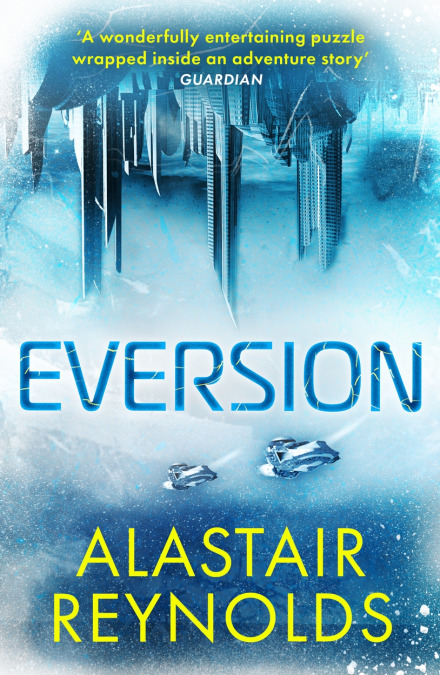
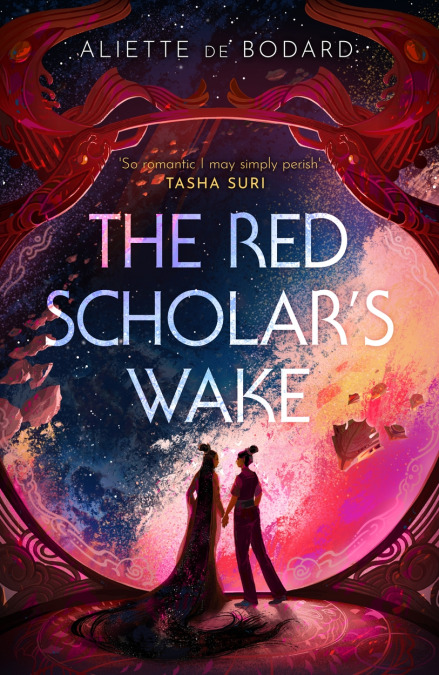


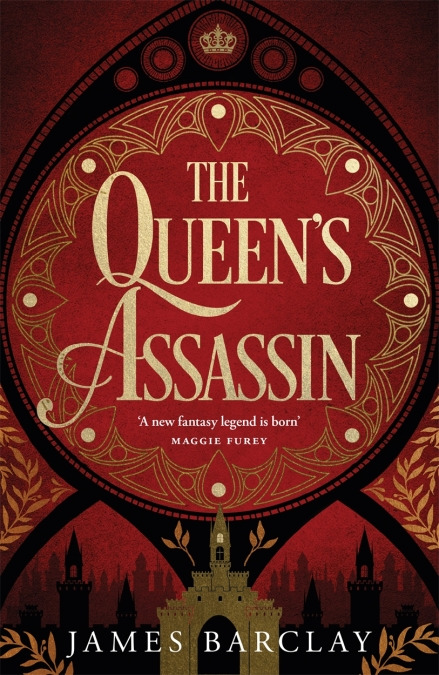




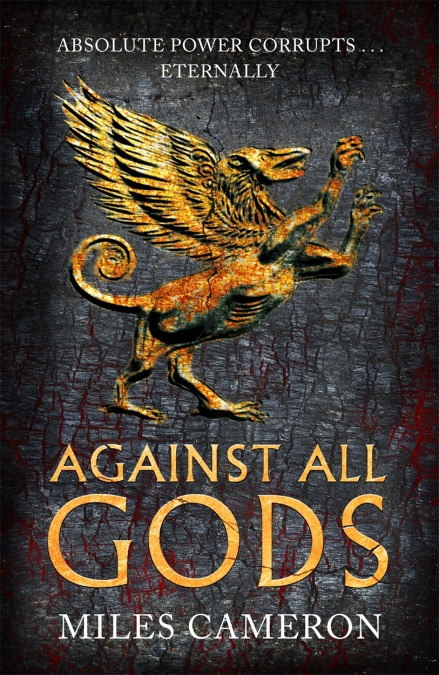
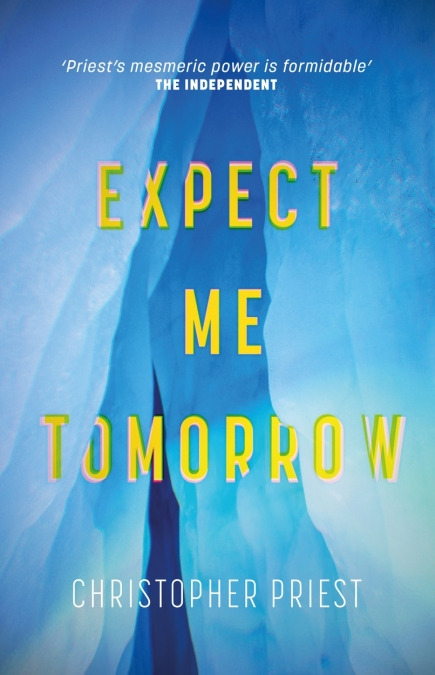





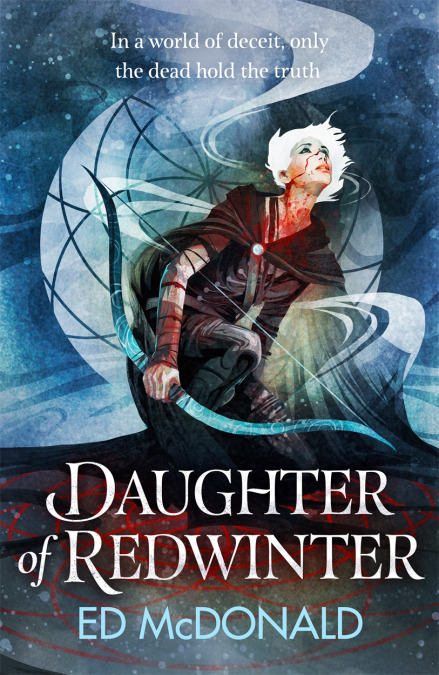



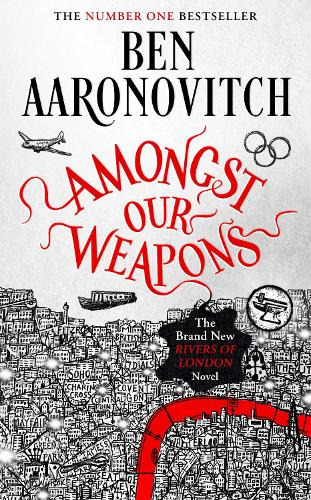
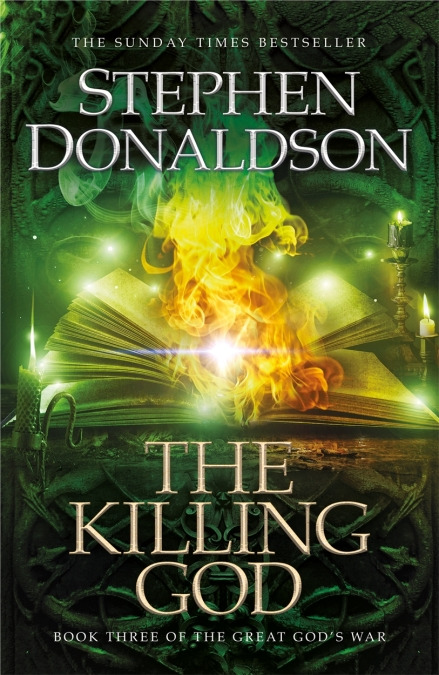
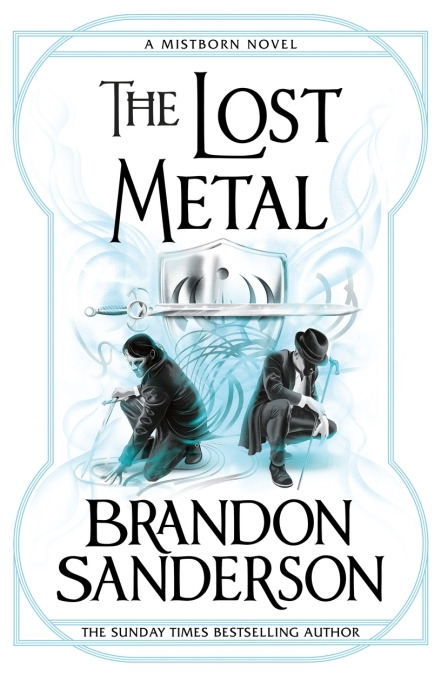
BEST SERIES
The Graceling Realm series by Kristin Cashore
The Elric Saga by Michael Moorcock
The Last War trilogy by Mike Shackle
The Hussite Trilogy by Andrzej Sapkowski
The Legacy of the Mercenary King trilogy by Nick Martell
Rivers of London by Ben Aaronovitch
The Mistborn series by Brandon Sanderson
The Great God's War trilogy by Stephen Donaldson
THE ASTOUNDING AWARD FOR BEST NEW WRITER
Rebecca Zahabi, The Collarbound
Kelly Andrew, The Whispering Dark
BEST EDITOR - LONG FORM
Gillian Redfearn
Maybe we’re biased, but Gillian’s the best. She’s been at Gollancz nearly 20 years, and is the editor for Brandon Sanderson, Joe Abercrombie, Alastair Reynolds, Aliette de Bodard, Joanne Harris, Garth Nix, Elizabeth Bear, Patrick Rothfuss, Miles Cameron, Chris Wooding, Sarah Pinborough, Charlaine Harris… the list goes on! She is so involved in the SFF community, attending cons worldwide and she is staggeringly great at what she does. The only UK-based editor to be shortlisted for a Hugo award, she’s also genuinely one of the nicest people you will ever meet. Shortly after I first met her, she said something nice to me in the pub and I cried. On the plus side I set the bar for our future relationship very achievably low.
Marcus Gipps
Marcus has been in the biz for decades, starting as a bookseller and had a review Livejournal (yes, that's right, one of us) that helped him build respect with so many people in the industry. Any of the legendary, big names of SFF? He probably edits them. Michael Moorcock, Christopher Priest, Paul McAuley, Pat Cadigan, Stephen Baxter... He led the acquisition of THE LAST UNICORN once Peter S. Beagle got his rights back, he heads our WITCHER publishing, and his knowlege of SFF history is encyclopedic. He also leads our SF Gateway and Masterworks projects, archiving out of print SFF and saving them to keep in circulation. Marcus may be the most unflappable many on the planet, which is good because I'm extremely flappable so we balance out nicely.
Brendan Durkin
Do you like CHONKY books? So does Brendan. If you want a book to use as an offensive weapon, Brendan will have likely commissioned it. Brendan finds the books that are going to be the classics of the future. He works with J. T. Greathouse, Christopher Buehlman, Mike Shackle, SJ Morden, Chris Wooding, as well as being the lead for the Ursula K. Le Guin estate, the Terry Pratchett estate AND the Frank Herbert estate! Oh, and our beautiful D2C editions? All from his crazy genius mastermind brain. Also if you need somewhere to eat in central London? Go to him for a recommendation. I impressed him with my lunch choice the other day and felt like I'd Made It.
#Gollancz Blogging#Hugo Awards#Worldcon#Award Nominations#SFF Awards#Please nominate us!!#Maybe if any of our stuff gets shortlisted I can make a case for getting some Very Important Checkmarks
18 notes
·
View notes
Link
Check out this listing I just added to my Poshmark closet: The Years Best Fantasy and Horror Eleventh Edition SIGNED HC DJ 1st Ed Book.
0 notes
Text

and push-button inputs. [25]
In 1983, a busty female robot named
"Sweetheart" was removed from a display at the Lawrence Hall of Science after a petition was presented claiming it was insulting to women.
The robot's creator, Clayton Bailey, a professor of art at California State University, Hayward called this "censorship" and "next to book burning". [26] Artificial women have been a common trope in fiction and mythology since the writings of the ancient Greeks (see the myth of Pygmalion). This has continued with modern fiction, particularly in the genre of science fiction. In science fiction, female-appearing robots are often produced for use as domestic servants and sexual slaves, as seen in the film Westworld, Paul J. McAuley's novel Fairyland
(1995), and Lester del Rey's short story "Helen O'Loy" (1938), [27] and sometimes as warriors, killers, or laborers. The character of Annalee Call in Alien Resurrection is a rare example of a non-sexualized gynoid. A long tradition exists in literature of the construction of an artificial embodiment of a certain type of ideal woman, and fictional gynoids have been seen as an extension of this theme. [28] Examples include Hephaestus in the Iliad who created female servants of metal, and Ilmarinen in the Kalevala who created an artificial wife. Pygmalion, from Ovid's account, is one of the earliest conceptualizations of constructions similar toJUNGLEWOODNETHERRACKNETHERWARTAAAAENCHANTMENTTABLECHORUSFLOWERAAAAAAAAREDSTONEREPEATERREDSTONECOMPARATORAATRiPWiREHOOKCOMMANDBLOCKSTiCKYPiSTONAAALiENSSPECiESFAiRiESDEiTiESGODSCLOWNSAAAROBOTSANDROiDSARTiFiCiALiNTELLiGENCESAAABRAiNSPOWERSiNTELLiGENCEQUOTiENTSAAAAAWORMSTAPEWORMSTUBESTUMORSCANCERSAAAHOSTSENTiTiESPARASiTESBACTERiASFUNGiSAAAMiCROORGANiSMSMUSHROOMSSURGERiESAAAASCiENCESPHYSiCSWiTCHCRAFTSMAGiCSAAAAAAAVOODOOSHOODOOSWiZARDSWARLOCKSAAAAAACULTSSECRETSOCiETiESALTEREGOSAAAAAAAAAAiNNERDEMONSCROSSROADDEMONSAAAAAAAAAMEDiCALTREATMENTS CLONES
1 note
·
View note
Text
Beyond the Burn Line, par Paul J. McAuley (Gollancz, septembre 2022)

Sur une planète qui pourrait être la Terre dans quelques centaines de milliers d’années, l’espèce dominante (« The People ») est venue après « The bears », qui eux-mêmes ont succédé aux « Ogres » lesquels ont disparu par le feu qui a laissé « The Burn Line » dans les strates géologiques. Un jeune « scholar », Pilgrim Saltmire, enquête sur l’éventualité que des visiteurs venus d’ailleurs soient déjà venus, voire s’apprêtent à venir, sur son monde…
Un roman en deux parties. La première, celle qui raconte la vie de Pilgrim, est intéressante (même si elle n’est pas très originale dans son concept). La seconde, celle qui révèle les secrets, et les secrets dans les secrets, est nettement moins réussie. On pourrait même croire que les deux parties n’ont pas été écrites par la même main !
0 notes
Photo

Red Dust by Paul J. McAuley, cover by Jim Burns (1993)
Jim Burns has been my favourite SF and fantasy illustrator since I first saw Planet Story, his illustrated novel written in collaboration with Harry Harrison. Nobody does airbrushing like him! Burns was still painting covers as late as 2015; see his collection Hyperluminal for more extraordinary art.
8 notes
·
View notes
Text
Asimov’s Science Fiction (June 1998)
There's a good chance I'll skip next week. Work's being unpleasantly unpredictable with one of our larger rountine unpleasantnesses.

Anyway, Asimov's. One Novella, three novelettes, and two short stories.
Novella
The Days of Solomon Gursky, Ian McDonald
Immortality is a crapshoot. And since traditional suicide would be immoral, it's apparently necessary to destroy and recreate the universe just to prevent yourself from becoming immortal.
I'm not trying to turn this into a right to die screed, but I don't see the second option as any different from suicide.
Novelettes
Lovestory, James Patrick Kelly
Not all species have binary sexual reproduction. But because of poor imagination, most SF authors that go for non-binary reproduction seem to like the two genetic donors, one incubator model. Which, honestly seems odd to me. And to one of the aliens in this story who decided to study biology with human help.
We don't get to see the aftermath here, but I imagine 'stay together for the kids' isn't any happier of a decision here than it is in real life.
The Moon Girl, M. Shayne Bell
Recently uncovered documents tell the story of a british man in Niger who helped a very visibly alien woman escape from the Sultan's harem.
Honestly I didn't find this one very engaging, and the part where the british man digresses about how ugly the Sultan's wives are when he peeps on them bathing didn't help anything.
Red, Sarah Clemens
A white girl visiting her older relatives in the American South learns about her werewolf great-to-the-nth aunt, and helps her find peace, with the help of a couple members of the black family that's taken care of her family for generations.
Is suicide the hidden theme this issue?
Short Stories
17, Paul J. McAuley
Crapsack future. Poor girl with a number for a name. Murdering rapist ex-boyfriend. Horrifically dangerous job with guaranteed progressively debilitating injury as a happy end.
SF is so goddamn cheerful.
Target of Opportunity, Stephen Dedman
A time travelling big game hunter of sorts helps prove that at least one species of dinosaurs are clever enough for tool use. Possibly with the help of his wife. Told from the perspective of the guide who wants to bang the wife even after she becomes a widow and he starts an ongoing relationship with her close friend.
Are we completing the suicide trifecta here? Or is it just more murder?
Final Thoughts
I've read worse.
#Asimov's Science Fiction#Stephen Dedman#Paul J. McAuley#sarah clemens#m. shayne bell#James Patrick Kelly#Ian McDonald
2 notes
·
View notes
Text
@jurgenronaaz is the best big brother ever! He took me to a used book store today for my birthday, and helped me buy 13 books!

I am so excited to read them all!!!
#books#birthday#the witcher#andrzej sapkowski#high druid of shannara#terry brooks#fairyland#paul j mcauley#chronicles of the necromancer#gail z martin
7 notes
·
View notes
Photo
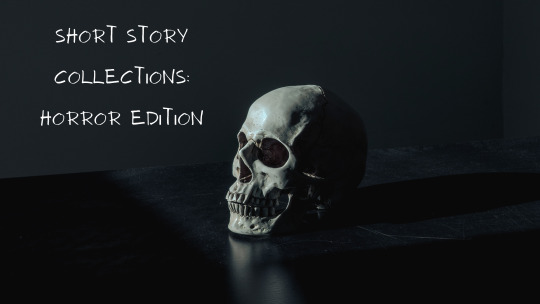
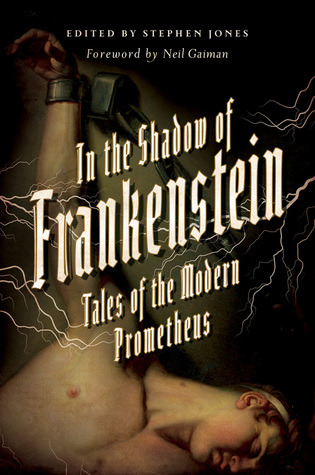
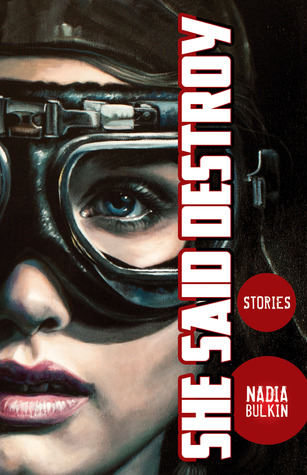
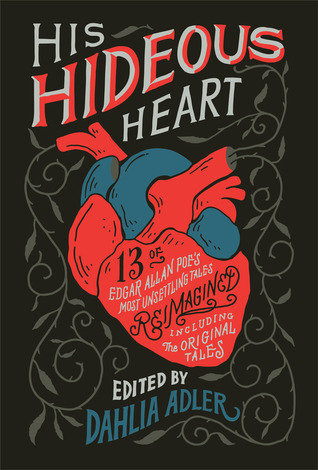

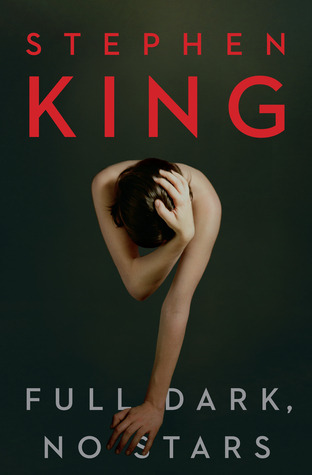
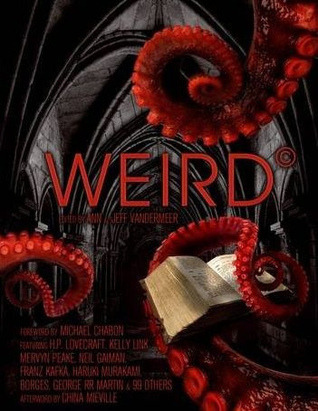
Short Story Collections: Horror edition
In the Shadow of Frankenstein: Tales of the Modern Prometheus by Stephen Jones, Neil Gaiman
Frankenstein... His very name conjures up images of plundered graves, secret laboratories, electrical experiments, and reviving the dead.
Within these pages, the maddest doctor of them all and his demented disciples once again delve into the Secrets of Life, as science fiction meets horror when the world's most famous creature lives again.
Here are collected together for the first time twenty-four electrifying tales of cursed creation that are guaranteed to spark your interest—with classics from the pulp magazines by Robert Bloch and Manly Wade Wellman, modern masterpieces from Ramsey Campbell, Dennis Etchison, Karl Edward Wagner, David J. Schow, and R. Chetwynd-Hayes, and new contributions from Graham Masterton, Basil Copper, John Brunner, Guy N. Smith, Kim Newman, Paul J. McAuley, Roberta Lannes, Michael Marshall Smith, Daniel Fox, Adrian Cole, Nancy Kilpatrick, Brian Mooney and Lisa Morton.
Plus, you're sure to get a charge from three complete novels: The Hound of Frankenstein by Peter Tremayne, The Dead End by David Case, and Mary W. Shelley's original masterpiece Frankenstein; or, The Modern Prometheus.
As an electrical storm rages overhead, the generators are charged up, and beneath the sheet a cold form awaits its miraculous rebirth. Now it's time to throw that switch and discover all that Man Was Never Meant to Know.
She Said Destroy by Nadia Bulkin
A dictator craves love--and horrifying sacrifice--from his subjects; a mother raised in a decaying warren fights to reclaim her stolen daughter; a ghost haunts a luxury hotel in a bloodstained land; a new babysitter uncovers a family curse; a final girl confronts a broken-winged monster... Word Horde presents the debut collection from critically-acclaimed Weird Fiction author Nadia Bulkin. Dreamlike, poignant, and unabashedly socio-political, She Said Destroy includes three stories nominated for the Shirley Jackson Award, four included in Year's Best anthologies, and one original tale, with an Introduction by Paul Tremblay.
His Hideous Heart by Dahlia Adler, Kendare Blake, Rin Chupeco, Lamar Giles, Tessa Gratton, Tiffany D. Jackson, Stephanie Kuehn, Amanda Lovelace, Marieke Nijkamp, Emily Lloyd-Jones, Hillary Monahan, Caleb Roehrig, Fran Wilde
Thirteen of YA’s most celebrated names reimagine Edgar Allan Poe’s most surprising, unsettling, and popular tales for a new generation.
Edgar Allan Poe may be a hundred and fifty years beyond this world, but the themes of his beloved works have much in common with modern young adult fiction. Whether the stories are familiar to readers or discovered for the first time, readers will revel in Edgar Allan Poe’s classic tales, and how they’ve been brought to life in 13 unique and unforgettable ways.
The Doll-Master and Other Tales of Terror by Joyce Carol Oates
From one of our most important contemporary writers, The Doll-Master and Other Tales of Terror is a bold, haunting collection of six stories.
In the title story, a young boy becomes obsessed with his cousin’s doll after she tragically passes away from leukemia. As he grows older, he begins to collect “found dolls” from the surrounding neighborhoods and stores his treasures in the abandoned carriage house on his family's estate. But just what kind of dolls are they? In “Gun Accident,” a teenage girl is thrilled when her favorite teacher asks her to house-sit, even on short notice. But when an intruder forces his way into the house while the girl is there, the fate of more than one life is changed forever. In “Equatorial,” set in the exotic Galapagos, an affluent American wife experiences disorienting assaults upon her sense of who her charismatic husband really is, and what his plans may be for her.
In The Doll-Master and Other Tales of Terror, Joyce Carol Oates evokes the “fascination of the abomination” that is at the core of the most profound, the most unsettling, and the most memorable of dark mystery fiction.
Full Dark, No Stars by Stephen King
"I believe there is another man inside every man, a stranger..." writes Wilfred Leland James in the early pages of the riveting confession that makes up "1922." the first in this pitch-black quartet of mesmerizing tales from Stephen King. For James, that stranger is awakened when his wife, Arlette, proposes selling off the family homestead and moving to Omaha, setting in motion a gruesome train of murder and madness.
In "Big Driver," a cozy-mystery writer named Tess encounters the stranger along a back road in Massachusetts when she takes a shortcut home after a book-club engagement. Violated and left for dead, Tess plots a revenge that will bring her face-to-face with another stranger: the one inside herself.
"Fair Extension," the shortest of these tales, is perhaps the nastiest and certainly the funniest. Making a deal with the devil not only saves Dave Streeter from a fatal cancer but provides rich recompense for a lifetime of resentment.
When her husband of more than twenty years is away on one of his business trips, Darcy Anderson looks for batteries in the garage. Her toe knocks up against a box under a worktable and she discovers the stranger inside her husband. It's a horrifying discovery, rendered with bristling intensity, and it definitely ends a good marriage.
Like Different Seasons and Four Past Midnight, which generated such enduring films as The Shawshank Redemption and Stand By Me, Full Dark, No Stars proves Stephen King a master of the long story form.
The Weird: A Compendium of Strange and Dark Stories by Jeff VanderMeer, Ann VanderMeer, George R.R. Martin, Bob Leman, Haruki Murakami, Mervyn Peake, Michael Chabon, Neil Gaiman, William Gibson, Franz Kafka, Stephen King, Kelly Link
From Lovecraft to Borges to Gaiman, a century of intrepid literary experimentation has created a corpus of dark and strange stories that transcend all known genre boundaries. Together these stories form The Weird, and its practitioners include some of the greatest names in twentieth and twenty-first century literature.
Exotic and esoteric, The Weird plunges you into dark domains and brings you face to face with surreal monstrosities. You won't find any elves or wizards here...but you will find the biggest, boldest, and downright most peculiar stories from the last hundred years bound together in the biggest Weird collection ever assembled. The Weird features 110 stories by an all-star cast, from literary legends to international bestsellers to Booker Prize winners: including William Gibson, George R. R. Martin, Stephen King, Angela Carter, Kelly Link, Franz Kafka, China Miéville, Clive Barker, Haruki Murakami, M. R. James, Neil Gaiman, Mervyn Peake, and Michael Chabon.
#horror#short stories#horror stories#reading recs#book recs#reading recommendations#Book Recommendations#library#public library#reading list#tbr#currently reading#booklist#booklr#scary stories
40 notes
·
View notes
Photo

The Best of Best New Horror Volume 1, edited by Stephen Jones, PS Publishing, 2020. Cover art by Norman Saunders, info: pspublishing.co.uk.
Contents: Editor’s Foreword — Stephen Jones Introduction: Bettering the Best — Ramsey Campbell No Sharks in the Med [1989] — Brian Lumley The Man Who Drew Cats [1990] — Michael Marshall Smith The Same in any Language 1991] — Ramsey Campbell Norman Wisdom and the Angel of Death [1992] — Christopher Fowler Mefisto in Onyx [1993] — Harlan Ellison® The Temptation of Dr. Stein [1994] — Paul J. McAuley Queen of Knives [1995]— Neil Gaiman The Break [1996] — Terry Lamsley Emptiness Spoke Eloquent [1997] — Caitlín R. Kiernan Mr. Clubb and Mr. Cuff [1998] — Peter Straub Index to the First Ten Years of Best New Horror I: Index by Contributor II: Index by Title III: Contents of Previous Omnibus Editions
8 notes
·
View notes
Text

Three hunters enter a fantasy forest with undines, unicorns, and changelings in chariots pulled by birds (Hank Jankus for the short story "Karl and the Ogre" by Paul J McAuley, Dragon 135, July 1988)
#D&D#Dungeons & Dragons#Hank Jankus#fantasy#fantasy forest#Dragon magazine#dnd#undine#unicorn#chariot#flying chariot#Paul J McAuley#Karl and the Ogre#Dungeons and Dragons#TSR#1980s
115 notes
·
View notes
Text
IT HAS BEEN about a year now since my involvement with the Dozier School For Boys began taking over my world. Kicking off the whirlwind was my need to get my hands on the school’s student ledgers. I won’t rehash the entire adventure but what I will say is that it took many frustrating nights online, several emails to the Archivist, the potential of an $600+ bill to get digital copies & finally an 8 hour round trip before I’d actually have what I wanted…Well at least a quarter of what I wanted!
HAVING ABSOLUTELY NO clue what I was looking for, I spent the next several weeks trying to organize what I had. Almost immediately number of very distinct patterns began jumping out at me. The same sentencing judges over & over again, the SAME sentence length OR lack there of & a crap load of blank spaces; Specifically under the “WHEN/HOW RELEASED��� columns. One would expect that any institution handling children would be required to keep detailed & accurate records of ALL of its charges, especially when it comes to their last known whereabouts BUT that would make too much sense, now wouldn’t it…
THE INFO THAT I had gotten was only from the latest volume of the ledgers & didn’t even make a dent in the number of boys that had been shoved through the doors to be reformed. I knew there were hundreds OR even thousands of names in those books. I maybe had a few hundred at the most. By now, I had gotten used to what I like to call the “Hurry Up & Stop” method of researching. Basically I’d need specific info, finally get said info ONLY to start looking it over & promptly figure out that I needed additional material OR even worse, I’d need something entirely different altogether. In this case, I had just assumed that I’d eventually be making another trip to the Archives; That is until I ended up becoming involved with Bob Straley & taking over his website…And right there on one of the site pages was a link to the detailed, handwritten notes that WHB Mr. Andrew Puel had spent hours putting together.
Mr. Andrew Puel At The State Archives…Sitting In The EXACT Same Spot That I Did When I Was There!
NOT IT!!
WHEN I SAW that link, I was beyond thrilled! I was finally going to have something reliable to validate what I had come up with! I had spoken with Andrew at Bob Straley’s memorial service & knew that any research he had done would be the best & most accurate info that I could possibly get. When the page loaded, it definitely did NOT show what I had been hoping for; In all actuality, it showed nothing but this:
ODDLY THE INFO was missing! I started clicking on some of the other older links on the website & sure enough, there were quite a few that led to nowhere. I don’t know why it gone OR where it went, only that it’s not there. I tried not to get to aggravated, thinking that there had to be a hard copy among the thousands of documents that I have. I spent the next several weeks going through EVERY page, folder, digital file, etc. & found nothing. Bob kept everything, so to say I was puzzled that he wouldn’t have a copy of something so important was a huge understatement. I did another look through, literally taking out every piece of paper, one by one; Still nothing.
Well Damn….
AN EVENING IN GAINESVILLE
ON A FRIDAY in late February, I made the 3 hour trip to Gaineville. With me was a small black bag filled with what I believed to be the most important material related to the Arthur G Dozier School for Boys. I pulled up to a beautiful home, tucked back in a quiet sub division that was surrounded by forest. Standing outside was a familiar face, Mr. Bryant Middleton. The “Whitehouse Boy” greeted me with a smile & a brief hug before inviting me inside to meet his wife. Both graciously spent several hours telling their personal story of Dozier & how the WHB’s Organization was founded. They were both lovely people & I was grateful that they had been so willing to meet with me & be as open as they were. When we finally moved into the dining room to look over the things that I had brought, I began pulling things out. I yanked a folder out that had been wedged inside of my over full bag & a stack of papers fell out. The stack was stapled together & folded in half. I picked it up to see what it was & as I unfolded it, my jaw hit the floor!
OH…MY…GOD…It was a hard copy of the list of missing boys! The same list that I had just spent weeks trying to find! The stuff inside of that bag was the stuff that I pulled out & reviewed quite frequently & there’s absolutely NO way that I would missed that thick stack of ledger pages! I slid the stack across the table, explaining to Bryant why I was a bit stunned at finding them. He thought it was strange as well. I’m not going to get into the specifics of my time with the Middletons in this post, although I will say that I’m very fortunate to have met with them. They’re great people & they continue to work toward keeping the future from repeating the past.
WHERE COULD THEY BE?
OF COURSE THERE is minimal info on the boys on this list. What is known is that most were listed as escaped but never recovered. A lot lacked permanent homes OR guardians, so there wouldn’t have been any concerned parents wondering about the whereabouts of their lost boy. It should also be noted that the last place they were seen was the Dozier School for Boys in Marianna. That leaves so many unanswered questions; Could ALL 185 boys on that list have actually successfully escaped & moved on to a better life? Even if that did happen, would it be possible that NOT 1 single child ever be heard from again? I suppose it could be possible for some BUT for All 185? I seriously have my doubts & given the history of Dozier, I’d say that’s highly unlikely. Especially considering the significant proof of other burial sites on the school’s 1200+ acres.Whether or not they continued life after Dozier OR their lives were taken at the school, they each deserve to be recognized. I’ll let them speak for themselves….
☆☆☆☆☆☆
JOSEPH WILK – 17 JAME HENRY COLSON SMITH – 16 BEHARD STEPHENS – 15 JOHNNIE J. RICHARDSON – 17 AB DURDEN – 16 WILLIAM RICHARD WHITE – 16 MONROE ROGERS – 16 NOWLA (SONNY) VENOS – 16 BERNARD WILLIAMS – 15 WILLIAM NICOLAS BURNETT – 15 FRED RUSH – 16 HORACE MECHOM – 16 J.W. HARRILL, JR. – 14 EDWARD MATTHEW MITCHELL – 17 LARRY DAVIS – 14. ALFONSO DEWEY DAVIS – 16 JAMES ARTHUR HARELL – 13 CARROL PITTMAN – 15 CARL HUBBARD REWLS – 14 RICHARD PEUDRY TYLER – 15 HAROLD OLDS – 14 LYNVILLE RAY – 16 LAIRD WILDES (age unknown) ALFRED SMITH GOODSON – 16 QUINCY LEWIS – 16
☆☆☆☆☆☆
ZANE HOPKINS – 12 ROBERT WALKER – 13 WILLIE FRANKLIN FARROW – 13 EUGENE JOHNS – 14 GABE BELL – 15 WILLIAM DEWARS – 15 LELAND LLOYD BRADY – 16 JASPER ALLEN HOLDER – 15 WILLIAM JOHNSON – 16 GEORGE HENRY ABBEY – 16 HARRY L. SAULS – 15 BEN BUNDRICK – 15 LOUIS VALOIS COUTURE – 16 ROBERT GILBERT ALBRITTON – 16 LAUDRIC BASKIN – 17 JAME HENRY COLSON SMITH – 16 JOHN JOSEPH COOGAN, JR – 16 ARINAUDO MACHIN, JR – 16 JULIAN GREEN – 15 CARL UNDERHILL – 16 WILLIAM DANIEL HATCHER – 17 DWIGHT SPRINGER – 14 JASON EDWARD LOGAN – 15 PAUL HERSHEY, JR – 17 CLARENCE C. RAULERSON – 16
☆☆☆☆☆☆
EVERETT BRADDOCK – 15 HAROLD EUGENE NORMAN – 16 RICHARD RUSSEL TODD – 14 EDWARD POOLE – 14 BILLY RAY BURNS – 16 MARCO GUTIERREZ – 14 WALTER C. GREEN – 16 LEON MANNING – 16 LEONARD JAMES NELSON – 16 GODSON WHITTAKER – 15 ROBERT GORDON – 15 ROBERT LAURIN GODDARD – 15 KENNETH LEE YORK – 17 TRUBEE BYRD – 17 ROWANE HOLLIDAY – 16 BOBBY WHITEHEAD – 15 WILLIAM EDWARD LEGGETT – 16 ROBERT HELGRAN – 13 OSCAR EUGENE MCCURDY – 16 WILLIAM RIVERA EMANUEL, JR – 16 JOHN LENNARD NAVE – 16 JACKIE CREWS – 16 ERNEST WOODARD – 16 ARTHUR KENT PATTERSON (aka William S. Johnson) – 14 DAVID EVANS HARRIS – 16
☆☆☆☆☆☆
JOHN HARRIMAN – 16 GB IRWIN – 14 HOWARD MCCALL – 17 OSCAR LEE CALDWELL – 14 JD THOMAS – 13 GEORGE F. CLAY – 13 WILLIS BUNYAN – 16 JAMES CAMPBELL – 15 BERTRAM THOMPSON – 16 WILLIE JAMES MURPHY – 17 SANDY JONES – 15 RALPH HALL – 16 MELVIN FALSON – 13 HERBERT LEE COVINGTON – 14 LUKE BENJAMIN – 16 TOMMIE L. WOOTEN – 15 WALTER ADAMS – 15 DAVID JONES (aka Cockran) – 15 EDWARD BROWN – 14 EDWARD DEMERRITT – 16 WILLIAM JENKINS – 13 MATEO BENARD COLUMBUS – 14 WILLIE C. MITCHELL – 13 CLARENCE MORTON, JR – 15 JOSEPH JOHNSON – 16
☆☆☆☆☆☆
CURTIS WILSON – 10 EUGENE FULLER – 16 THOMAS BOWERS – 15 LEON DUNBAR – 16 DAVID EAGLETON – 14 HENRY JUNIOR JOHNSON – 14 EDWARD FOSTER – 15 GEORGE EDWARD THOMAS – 17 ODIS SINGLETON – 16 JAMES WILEY BRYANT – 14 CURTIS DOWNING – 15 WALTER LEE NIXON – 15 JOHN TYLER – 16 ELMORE JOHNSON – 15 HENRY MELVIN JONES – 16 DOCK SMITH – 15 ROBERT LEE KING – 16 WILLARD LAMAR SHELTON – 16 ROBERT HAYS – 16 CHAS W. CHAMBERS – 16 RUSSEL HUTTON – 15 HOWARD CAYWOOD – 15 BOBBY HAYES – 16 BILLY CAUDELL – 16 WALTER R. HAYES – 17
☆☆☆☆☆☆
ARTHUR KENT PITTEBON(?) – (age unknown) WILLIAM P. NUNES – 16 EDWIN T. FINNIE – 15 MILTON LEDBETTER – (age unknown) LEROY SMITH (aka Leroy Gregory) – 17 JOE RODRIGUEZ – 17 BENARD MIXON – 15 ROBERT WESLEY DAVIS – 16 PAUL DAVID HUGES – 12 ROY JOHNSON – 13 LENARD JAMES LOTT – 16 JERRY LLOYD – 16 GABRIEL THURMAN – 16 ROBERT LEE BOSTIC – 14 GEORGE HILL – 13 JOHN ALBURY – 14 NATHANIEL TURNER – 15 LEO COLLIER – 17 TEEVESTER JAMES – 15 FLOYD RILEY, JR – 17 GEORGE NELSON – 15 NORMAN MCAULEY – 15 LYLE MACK PAULK – 16 EDWARD GIBSON – 14 WILLIAM EDWARD CORTEZ – 16
☆☆☆☆☆☆
ROBERT CHRISTMAN – 16 HUBERT BERRYMAN – 15 CHARLES LACGUEY – 16 CHARLES EDWARD KIDDY – 15 JOHN CHARLES CLANCEY – 15 DANNY LEE BOWMAN – 16 HOWARD GEORGE FAGG – (age unknown)
ROBERT ALTON SINGLETARY – 17 ELLIS MARLOWE HASKIN – 16 JAMES PHILLIP SLAWSON – 16 JAMES JOHNS – 17 BENARD JACKSON – 14 ARLISS BLACKMON – 15 BENJAMIN UDEL – 13 NATHANIEL BOWLES – 16 ROLAHO LYLES – 16 CLARENCE BOBBY BROWN – 15 WILLIE BRADFORD – 16 BILLY JACKSON – 13 RICHARD GILLYARD – 14 LEONARD WHITEHEAD – 15 FREDERICK NATHANIEL HARREL – 16 HENRY MCLENDON – 17 SAMOLE DARBY – 17 WILLIE LEE DOUGLAS – 15
☆☆☆☆☆☆
MOZELL BRADLEY, JR – 16 J.C. STEPHENS – 15 CHARLES BROWN – 15 GRANT BERNARD KEMP – 13 RONNIE FRANKIE ROSE – 16 JOE EDWARD ALLEN – 15 VICTOR STEPHEN GRICE – 16 TOMMY COOK (Mathias) – 15 JERRY COOK – 16 JOHNNY LEON WRIGHT – 16
IT’S AN ENTIRELY different feeling you get when you’re able to put names to the children you’ve been speaking of….
♤Please Consider Helping In The Fight For Justice By Signing The 1st Petition: https://www.change.org/p/jenn-moslek-re-investigation-of-the-arthur-g-dozier-school-for-boys♤
☆ IF YOU OR SOMEONE YOU KNOW SUFFERED ABUSE, PASSED AWAY, WENT MISSING OR WITNESSED ANY WRONGDOINGS WHILE AT “THE FLORIDA INDUSTRIAL SCHOOL FOR BOYS” AKA “THE ARTHUR G. DOZIER SCHOOL FOR BOYS” OR THE OKEECHOBEE SCHOOL FOR BOYS, PLEASE REACH OUT VIA HERE AT findingflorida.blog OR ANY OF THE CONTACT INFO LISTED BELOW!!☆
Want More “Finding Florida?” BE SURE TO “SUBSCRIBE”!
FOR PRIVATE CONTACT SEND EMAILS TO: [email protected]
FOR ALL DOZIER RELATED INFO:
http://thewhitehouseboysonline.com
AND
http://www.whitehouseboys2007.com
FOR FULL PHOTO GALLERIES & ADDITIONAL LOCATION INFO FOLLOW ME ON FB AT: @GRAVEAdventuresFL
THE LOST BOYS OF DOZIER: Have You Seen Me? IT HAS BEEN about a year now since my involvement with the Dozier School For Boys began taking over my world.
#Abandoned and Neglected Cemeteries#Abandoned Property#AGDSB#Agriculture#Andrew Puel#Anthropology#Archives#Arthur G Dozier School for Boys#Arthur G Dozier School for Boys Victims of Reform School Abuse Act#Assault#Boothill#Bryant Middleton#Burials#Business#Cause of Death#Cemeteries#Child Abuse#Child Advocate#Children#Cold Cases#Community#Corruption#Crime & Punishment#Crimes Against Children#Crimes Against Humanity#CS/SB1780#Department of Juvenile Justice#Dilapidated Property#DJJ#Dozier
2 notes
·
View notes
Text
En 2016, les éditions Le Bélial’ lançaient plusieurs collections nouvelles, dont Une Heure-Lumière, qui nous intéresse ici.
Une heure-lumière, c’est la distance que parcourt un photon dans le vide en 3600 secondes, soit plus d’un milliard de kilomètres. Une distance supérieure à celle séparant Jupiter du Soleil. Ce qui nous emmène déjà très loin…
Faire voyager loin le lecteur, voilà précisément l’ambition de la nouvelle collection du Bélial’, Une Heure-Lumière.
Une Heure-Lumière, ce sont des romans courts et de facture élégante : assez brefs pour être lus d’une traite, mais riches en sense of wonder, faisant la part belle à une science-fiction ambitieuse, celle du vertige et de l’émerveillement.
Une Heure-Lumière, c’est une collection proposant des textes inédits des meilleurs auteurs français et anglo-saxons : Nancy Kress, Paul J. McAuley, Vernor Vinge, Thomas Day, Greg Egan, Laurent Genefort…
Une Heure-Lumière, ce sont aussi des textes récompensés par les prix littéraires les plus prestigieux : Hugo, Nebula, Locus…
Une Heure-Lumière, ce seront cinq à six romans par an. Avec les étoiles pour objectif.
Dès le départ, les éditions Le Bélial’ ont décidé de publier dans ce format “de poche” des novellas, format toujours compliqué à mettre en valeur dans nos supports très cadrés pour le roman. Le but semblait à la fois de mettre en lumière des textes d’habitude difficile à faire connaître (la revue Bifrost fonctionne bien, mais ce n’est pas un public très étendu) et de viser des textes primés pour se centrer sur un nombre faible de publications mais avec une grosse “concentration de qualité”, peut-on dire (c’est aussi pour ça que les premiers de la collection insistent beaucoup sur les récompenses reçues). En plus, comme ce sont des textes courts, il y a un petit côté “collectionnite” qui joue forcément.
Qui dit petit format qui veut mettre en valeur de la science-fiction de qualité dit forcément écrin à soigner. C’est ainsi Aurélien Police qui est la graphiste et illustrateur officiel de l’ensemble de la collection. De façon générale, les contraintes sont relativement fortes dans ce type de publication, entre la nécessité de créer une charte graphique reconnaissable pour bien lancer la collection et celle d’incorporer tous les éléments classiques d’une couverture. On retrouve ainsi le dégradé reconnaissable des travaux d’Aurélien Police agrémenté d’éléments récurrents (certaines silhouettes, quelques aspects floraux, des engrenages par exemple). Le plus dur pour lui est sûrement de saisir l’essence de la novella
This slideshow requires JavaScript.
Côté quantitatif, l’objectif est atteint. Ainsi, en 2016, six novellas ont paru, puis 5 en 2017 et 5 au moins sont prévues pour 2018. Petit rappel des seize premiers titres : 1. Dragon, de Thomas Day 2. Le Nexus du docteur Erdmann, de Nancy Kress 3. Cookie Monster, de Vernor Vinge 4. Le Choix, de Paul J. McAuley 5. Un Pont sur la brume, de Kij Johnson 6. L’Homme qui mit fin à l’Histoire, de Ken Liu 7. Cérès et Vesta, de Greg Egan 8. Poumon vert, de Ian R. McLeod 9. Le Regard, de Ken Liu 10. 24 vues du mont Fuji, par Hokusai, de Roger Zelazny 11. Le Sultan des nuages, de Geoffroy A. Landis 12. Issa Elohim, de Laurent Kloetzer 13. La Ballade de Black Tom, de Victor Lavalle 14. Le Fini des mers, de Gardner Dozois 15. Les Attracteurs de Rose Street, de Lucius Shepard 16. Retour sur Titan, de Stephen Baxter
De belles lectures à découvrir !
Focus #11 : La collection Une Heure-Lumière chez Le Bélial’ En 2016, les éditions Le Bélial' lançaient plusieurs collections nouvelles, dont Une Heure-Lumière, qui nous intéresse ici.
2 notes
·
View notes
Text

and push-button inputs. [25]
In 1983, a busty female robot named
"Sweetheart" was removed from a display at the Lawrence Hall of Science after a petition was presented claiming it was insulting to women.
The robot's creator, Clayton Bailey, a professor of art at California State University, Hayward called this "censorship" and "next to book burning". [26] Artificial women have been a common trope in fiction and mythology since the writings of the ancient Greeks (see the myth of Pygmalion). This has continued with modern fiction, particularly in the genre of science fiction. In science fiction, female-appearing robots are often produced for use as domestic servants and sexual slaves, as seen in the film Westworld, Paul J. McAuley's novel Fairyland
(1995), and Lester del Rey's short story "Helen O'Loy" (1938), [27] and sometimes as warriors, killers, or laborers. The character of Annalee Call in Alien Resurrection is a rare example of a non-sexualized gynoid. A long tradition exists in literature of the construction of an artificial embodiment of a certain type of ideal woman, and fictional gynoids have been seen as an extension of this theme. [28] Examples include Hephaestus in the Iliad who created female servants of metal, and Ilmarinen in the Kalevala who created an artificial wife. Pygmalion, from Ovid's account, is one of the earliest conceptualizations of constructions similar toJUNGLEWOODNETHERRACKNETHERWARTAAAAENCHANTMENTTABLECHORUSFLOWERAAAAAAAAREDSTONEREPEATERREDSTONECOMPARATORAATRiPWiREHOOKCOMMANDBLOCKSTiCKYPiSTONAAALiENSSPECiESFAiRiESDEiTiESGODSCLOWNSAAAROBOTSANDROiDSARTiTiCiALiNTELLiGENCESAAABRAiNSPOWERSiNTELLiGENCEQUOTiENTSAAAAAWORMSTAPEWORMSTUBESTUMORSCANCERSAAAHOSTSENTiTiESPARASiTESBACTERiASFUNGiSAAAMiCROORGANiSMSMUSHROOMSSURGERiESAAAASCiENCESPHYSiCSWiTCHCRAFTSMAGiCSAAAAAAAVOODOOSHOODOOSWiZARDSWARLOCKSAAAAAQCULTSSECRETSOCiETiESALTEREGOSAAAAAAAAAAiNNERDEMONSCROSSROADDEMONSAAAAAAAAAMEDiCALTREATMENTS AND
1 note
·
View note
Text
READING DE NACHT READING 2017
my favourite books of the year
my overall favourite book of the year:

david keenan “this is memorial device” [faber & faber] (2017)
POST-CYBERPUNKSTOMPF:
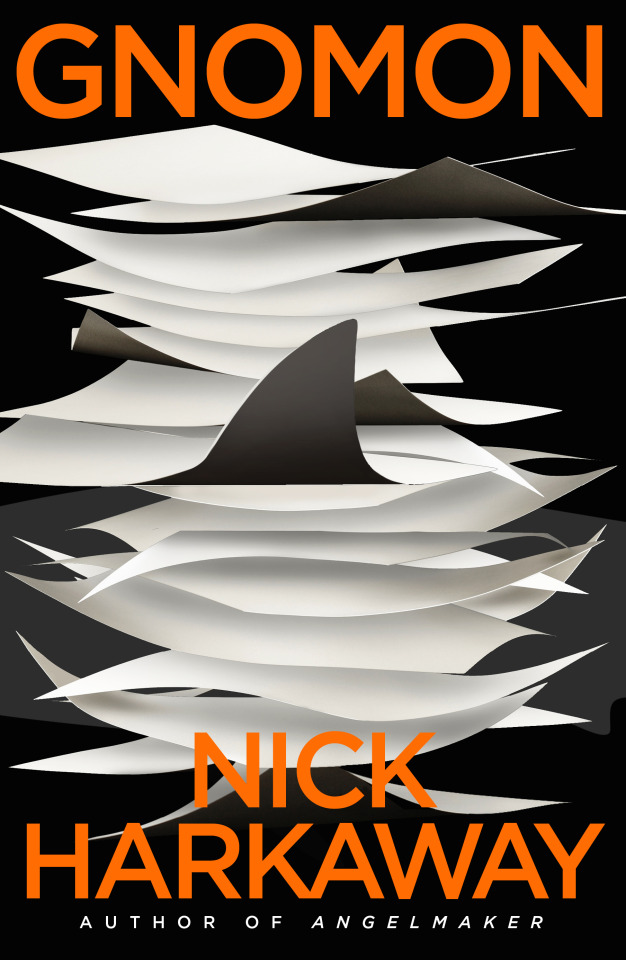
01 nick harkaway "gnomon" (2017) 02 kim stanley robinson "new york 2140" (2017) 03 m john harrison "you should come with me" (2017) 04 gardner dozois (ed) "the year's best science fiction: thirty-fourth annual collection" (2017) 05 james morrow "the asylum of dr. caligari" (2017)
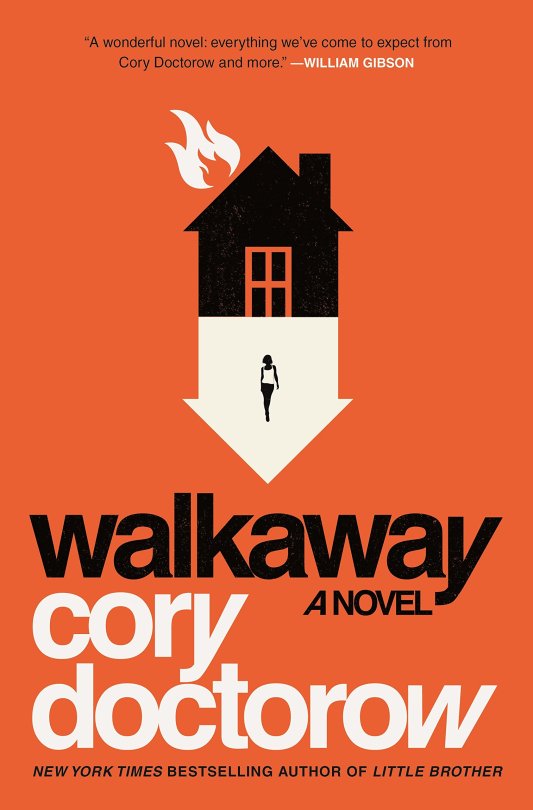
06 annalee newitz "autonomous" (2017) 07 cory doctorow "walkaway" (2017) 08 dave hutchinson "acadia" (2017) + dave hutchinson "slow companions" (2017) 09 ed finn (ed) visions, ventures, escape velocities: a collection of space futures" (2017) 10 bryan thomas schmidt (ed) "infinite stars" (2017)
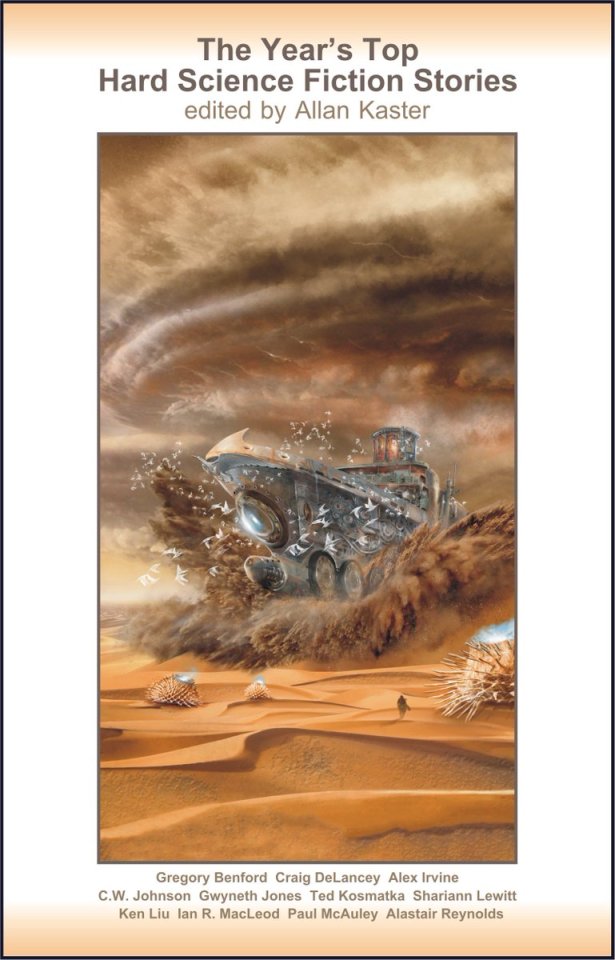
11 allan kaster "the year's top hard science fiction stories" (2017) 12 nina allen "the rift" (2017) 13 charles stross "the delirium brief" (2017) 14 simon morden "at the speed of light" (2017) 15 ada palmer "seven surrenders" (2017) & "the will to battle" (2017)
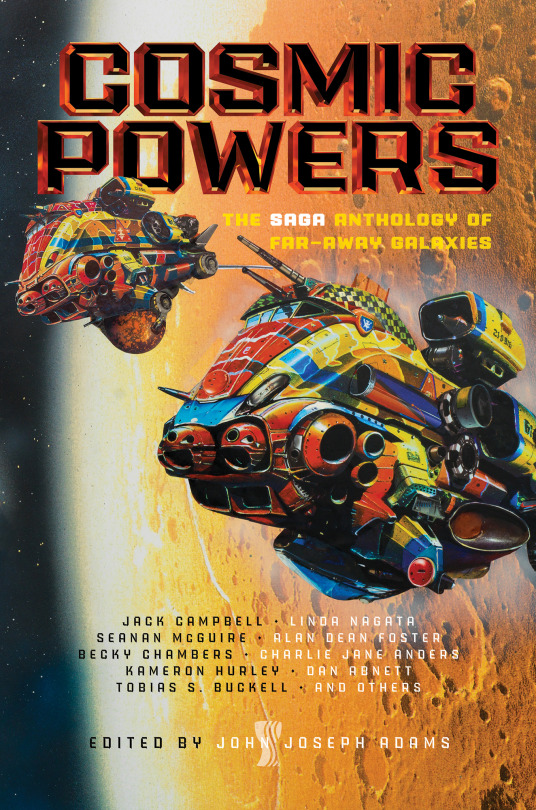
16 yoon ha lee "raven stratagem" (2017) 17 john joseph adams (ed) "cosmic powers" (2017) 18 mur lafferty "six wakes" (2017) 19 taiyo fujii "orbital cloud" (2017) 20 andrew bannister "creation machine" (2016) + andrew bannister "iron gods" (2017)
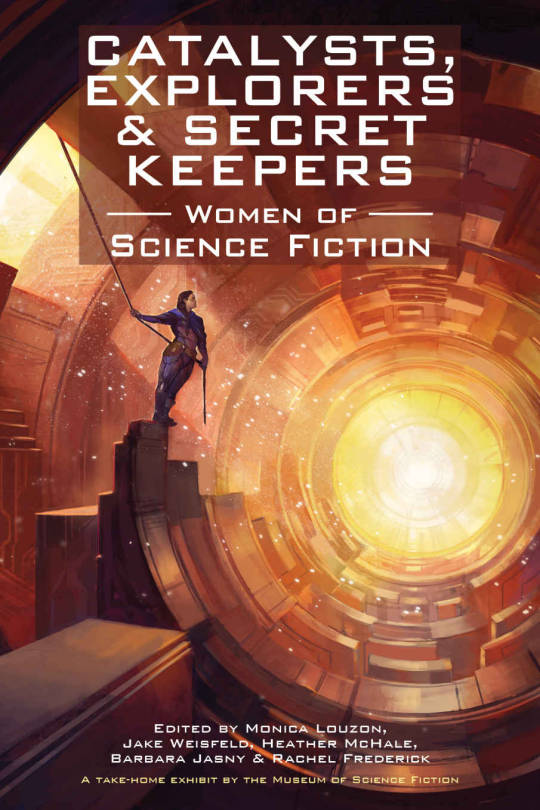
21 gareth l powell "entropic angel & other stories" (2017) 22 ann leckie "provenance" (2017) 23 monica louzon (ed) "catalysts, explorers & secret keepers: women of sf" 24 ian mconald "wolf moon" (2017) 25 neal stephenson & nicole galland "the rise & fall of d.o.d.o." (2017)

26 adam roberts "the real-town murders" (2017) 27 tim pratt "the wrong stars" (2017) 28 jim c. hines "terminal alliance" (2017) 29 charles stross "the empire games" (2017) 30 james s.a. corey "persepolis rising" (2017) + james s.a. corey "strange dogs" (2017)

31 allen steele "avengers of the moon (captain future)" (2017) 32 neal asher "infinity engine [transformation III]" (2017) 33 jason m. hough "injection burn" (2017) + jason m. hough "escape velocity" (2017) 34 donna scott (ed) "best of british science fiction 2016"/una mccormack "star of the sea" (2016) 35 david marusek "upon this rock"/john scalzi "collapsing empire" (2017)
& a couple of re-readings: richard k. morgan "takeshi kovacs trilogy" in view of the coming netflix series and colin harvey "damage time" (2010) ... no further reason needed!
STOMPF KLASSIK:
01 matthew mcintosh "the mystery.doc" (2017)
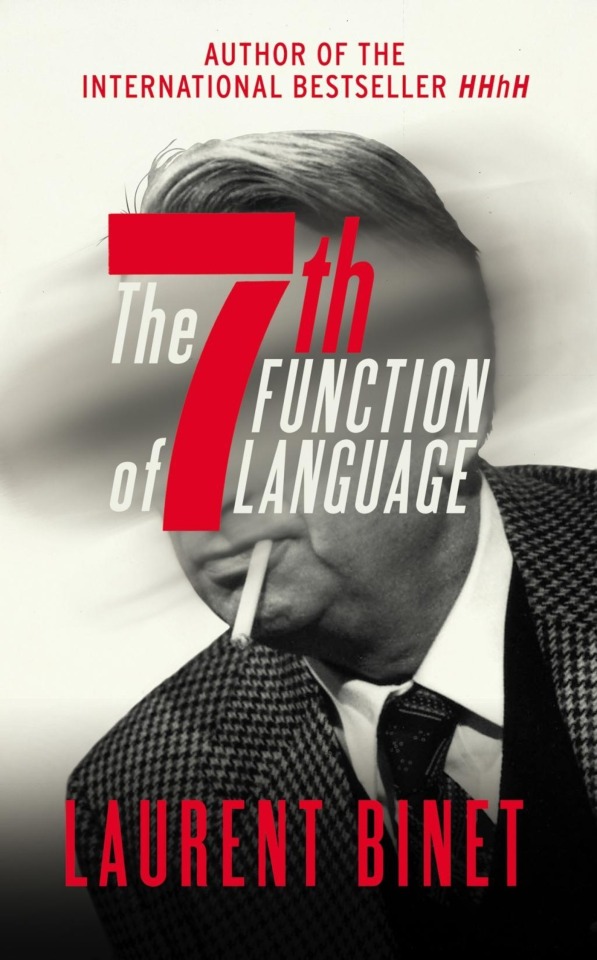
02 sébastien roger "les désordres du monde. walter benjamin à port-bou" (2017) 03 laurent binet "hhhh" (2012) 04 + laurent binet "the 7th function of language" (2017) 05 jean echenoz "special envoy" (2017)
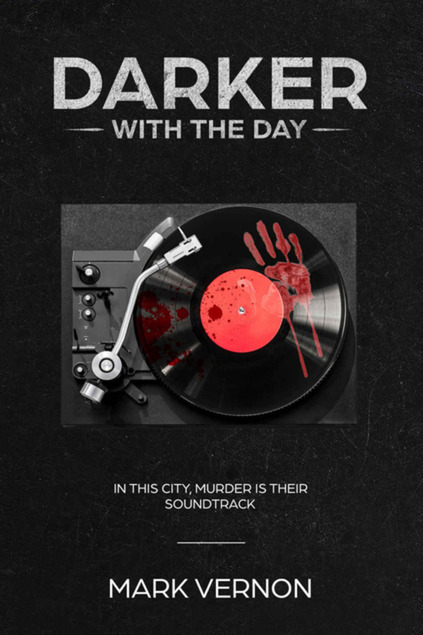
06 paul stanbridge "forbidden line" (2016) 07 ryu murakami "tokyo decadence (2016) 08 aifric campbell "the semantics of murder" (2008) 09 mark vernon "darker with the day" (2017) 10 magnus mills "the forensic records society" (2017)
GEDÄCHTNISSTOMPF:

01 mckenzie wark "general intellects: 25 thinkers for the 21st century" (2017) 02 claude lefort "wat is politiek?" (2016) 03 ger groot & sam ijsseling "dankbaar en aandachtig" (2013) 04 martin heidegger "beiträge zur philosophie (vom ereignis)" (2003) 05 hannah arendt "totalitarisme" (2014)
06 daniel birnbaum & kim west "life on sirius: the situationist international & the exhibition of art" (2016) 07 ger groot "de geest is uit de fles" (2017) 08 sean gaston "the impossible mourning of jacques derrida" (2006) 09 bas heijne "onbehagen: nieuw licht op de beschaafde mens" (2016) 10 giorgio colli "ecrits sur nietzsche" (2017)
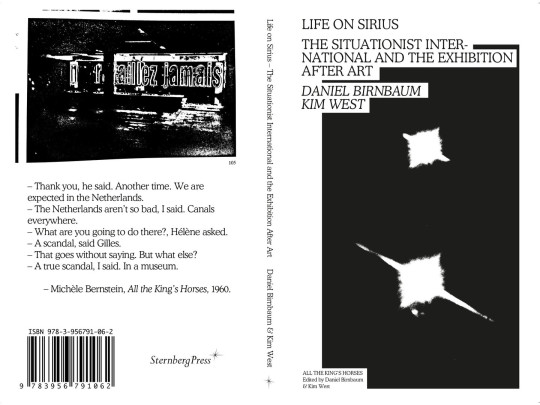
11 frédéric neyrat "échapper à l'horreur" (2017) 12 slavoj zizek "against the double blackmail, refugees, terror & other troubles with the neighbours" (2017) 13 henning mankell "quicksand" (2016) 14 jacques rancière "en quel temps vivons-nous? conversations avec eric hazan" (2017) 15 alain badiou "je vous sais si nombreux... " (2017)
16 alain badou & jean-luc nancy "la tradition allemande dans la philosophie" (2017) 17 tom mccarthy "typewriters bombs jellyfish [essays]" (2017) 18 valeria luiselli "tell me how it ends: an essay in 40 questions" (2017) 19 fredric jameson "raymond chandler: the detections of totality" (2016) 20 umberto eco "chronicles of a liquid society" (2017)
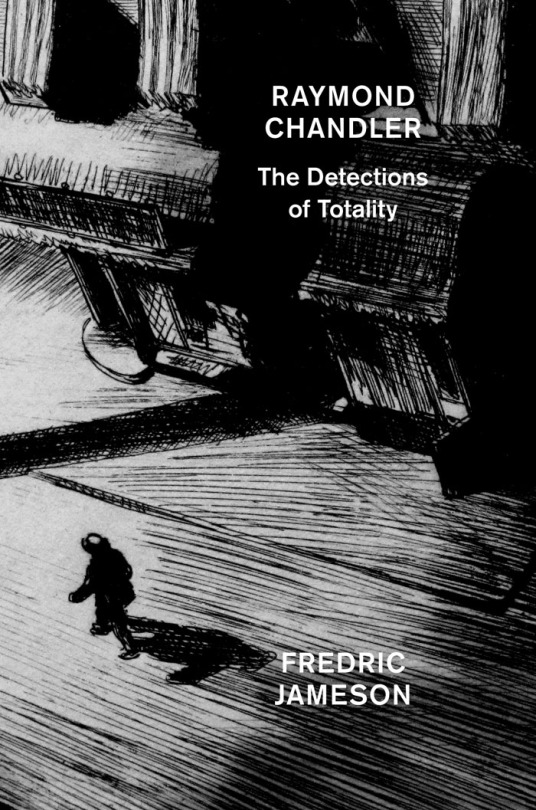
POLARSTOMPF:
01 chris petit "pale horse riding" (2017) + chris petit "the butchers of berlin" (2016) + chris petit "the human pool" (2002) + chris petit "the psalm killer" (1996)
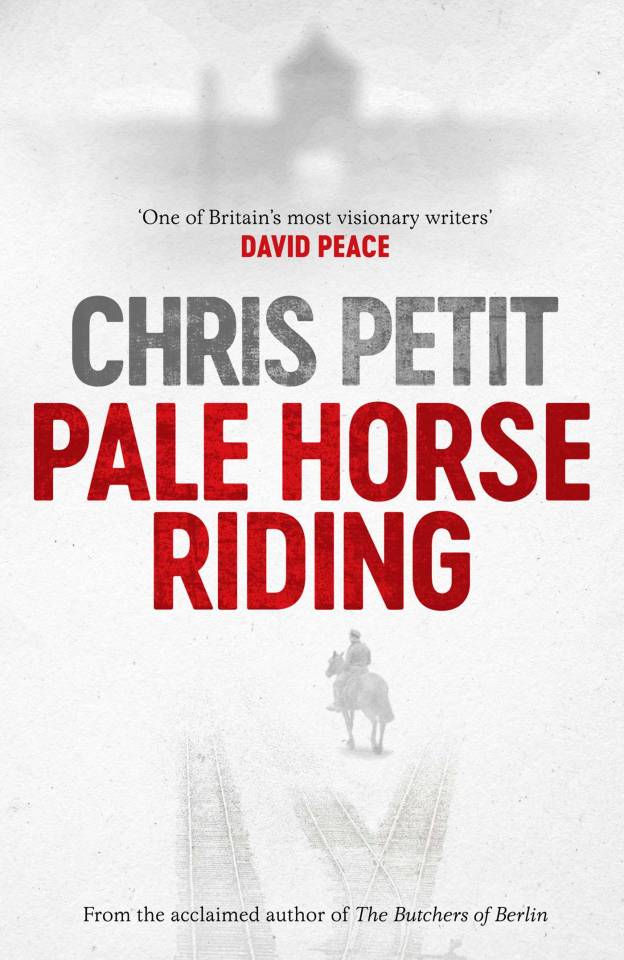
02 john le carré "a legacy of spies" (2017) 03 david hewson "sleep baby sleep" (2017) 04 mick herron "slow horses" (2010) + mick herron "dead lions" (2013) + mick herron "the list" (2015) + mick herron "real tigers" (2016) + mick herron "spook street" (2017) 05 jussi adler-olsen "the scarred woman" (2017)
06 jo nesbo "the thirst" (2017) 07 ben fergusson "the spring of kasper meier" (2014) 08 e.o. chirovici "the book of mirrors" (2017) 09 toni coppers "de zaak magritte" (2017) 10 james r. tuck "mama tried (crime fiction inspired by outlaw country music)" (2016)

YOUNGADULTSTOMPF:
01 philip pullman "la belle sauvage" (2017)
PLATTERSTOMPF:
01 cosey fanni tutti "art sex music" (2017) 02 david keenan "this is memorial device" (2017) 03 joanne demers "drone and apocalypse" (2015) 04 + joanne demers "listening through the noise" (2010) 05 robert barry "the music of the future" (2017)

06 richard cabut & andrew gallix (eds) "punk is dead: modernity killed every night" (2017) 07 butt gavin, kodwo eshun, & mark fisher (eds) "post punk then and now" (2016)" 08 sandra garrido "why are we attracted to sad music" (2016) 09 tomas serrien "klank: een filsofie van de muzikale ervaring" (2017) 10 marlies de munck "waarom chopin de regen niet wilde horen" (2017)

11 daniel warner "live wires" (2017) 12 will carruthers "playing the bass with three left hands" (2016) 13 steve hanley "the big midweek-life inside the fall (2016) 14 tex perkins "tex" (2017) 15 mark lanegan "i am the wolf" (2017)
17 simon reynolds "shock & awe" (2016) 18 andrew o'neill "a history of heavy metal" (2017) 19 bryan ray turcotte "the fucked up reader" (2007) 10 bob batchelor (ed) "literary cash" (2017) 20 simon webb "a 1970s teenager. from bell-bottoms to disco dancing" (2013)
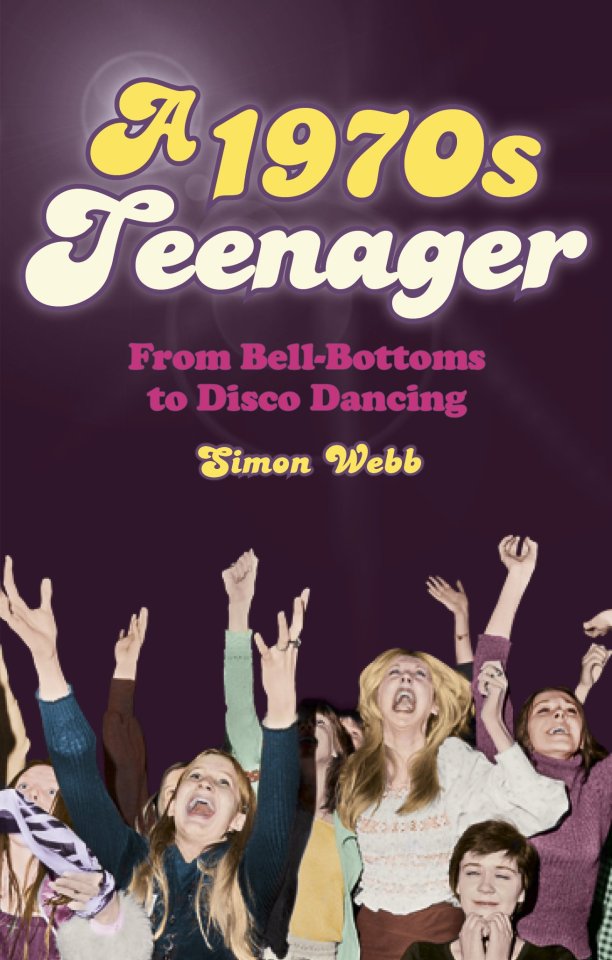
both bell-bottoms and disco dancing can be had @ muntpunt !
POESISSTOMPF:

01 jonty tiplady "zam bonk dip" (2010) 02 murray lachlan young "how freakin' zeitgeist are you?" (2017)

BILDERSTOMPF:
01 peter-andré bloch "sils-maria - "l'île bienheureuse" pour nietzsche" (2017)

02 willem vanhuyse "atlas van de imaginaire verklaringen: het complete handboek vor de 'patafysicus'" (2017) 03 reinhard kleist "nick cave: mercy on me" (2017) 04 william gibson "archangel (a graphic novel)" (2017) 05 a. uderzo, didier conrad & jean-yves ferri "astérix et la transitalique" (2017)
WISSENSCHAFTSTOMPF:
01 thibault damour & mathieu burniat "mysteries of the quantum universe" (2017) 02 brian cox & jeff forshaw "universal: a journey through the cosmos" (2017)
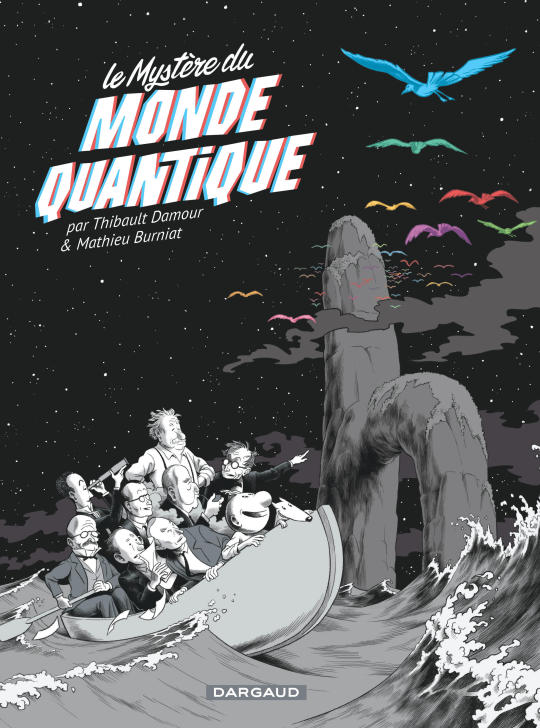
HUMOURSTOMPF:
01 james acaster "james acaster's classic scrapes" (2017)

02 chris wade “the story of derek and clive” (2017)
CYCLOSTOMPF:
01 frederik bakelandt "grinta! de bergen: 10 legendarsche wielercols" (2017)

02 lucien van impe & filip osselaer "de dag dat ik de tour verloor" (2017) 03 jonas heyerick & jelle vermeersch "bahamontes #17-#20" (2017) 04 frank strack "the hardmen: legends of the cycling gods" (2017) 05 matthias m. r. declercq "de val" (2017)

… tsundoku !
may your home be safe from tigers, leroy, x HNY!
the TBR pile grew with...

lászló krasznahorkai "the world goes on" (2017) samanta schweblin "fever dream" (2017)
peter mark, peter helman & penny snyder (eds) "the mountains in art history" (2017)
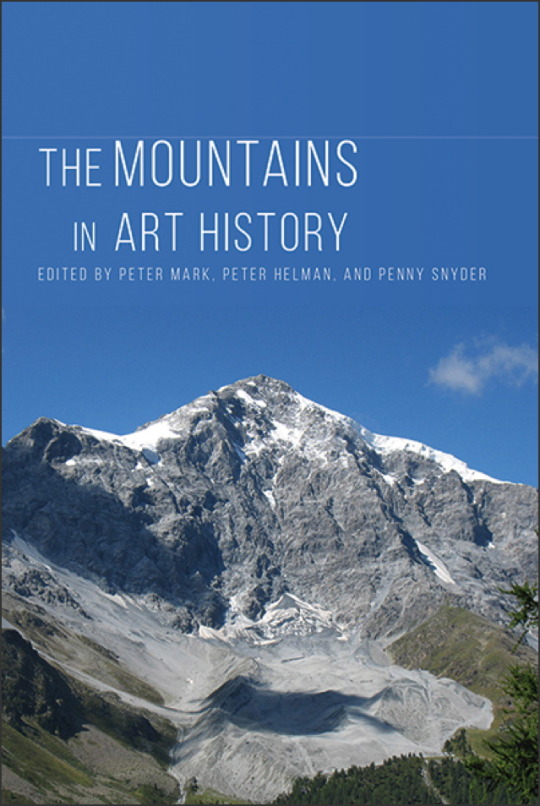
alvin lucier (ed) "eight lectures on experimental music" (2017) rhian e jones & eli davies "under my thumb: songs that hate women and the women who love them" (2017)
arne dahl "watching you" (2017) philip kerr "prussian blue" (2017) antti tuomainen "the man who died" (2017) jon michelet "the frozen women" (2017) nicolás obregón "blue light yokohama" (2017)

alex lamb "exodus" (2017) c robert cargill "sea of rust" (2017) chris brookmyre "places in the darkness" (2017) d nolan clark "forgotten worlds" & "forbidden suns" (2017) dan moren "the caledonian gambit" (2017) elizabeth moon "cold welcome" (2017) ferrett steinmetz "the uploaded" (2017) greg egan "dichronauts" (2017) ian whates "the ion raider" (2017) jaine fenn "the martian job" (2017) jamie sawyer "pariah" (2017)
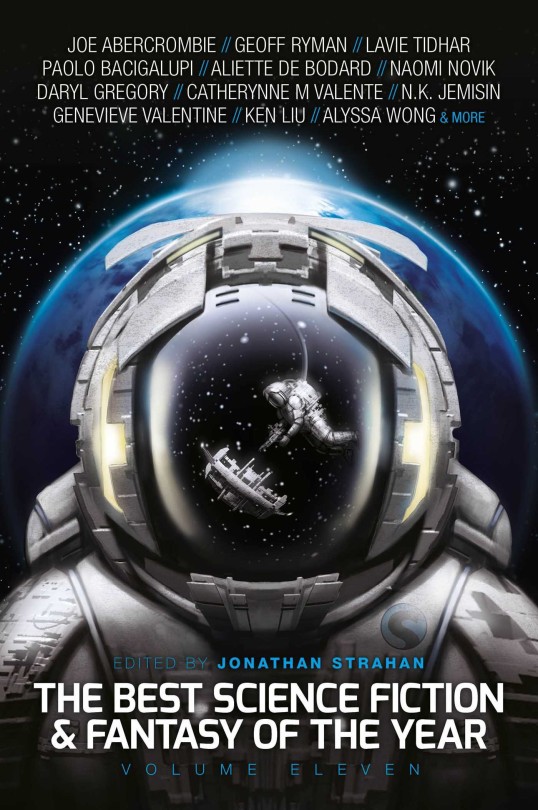
jeff noon "a man of shadows" (2017) joe m mcdermott "the fortress at the end of time" (2017) joe zieja "communication failure" (2017) john kessel "the moon and the other" (2017) john meaney "destructor function" (2017) jonathan strahan (ed) "best sf &f of the year vol 11" & "infinity wars" (2017) kameron hurley "the stars are legion" (2017) kay kenyon "at the table of wolves" (2017) malka older "null states" (2017) marina j. lostetter "noumenon" (2017)

martha wells "all systems red" (2017) neil clark (ed) "galactic empires" & "more human than human" (2017) paul mcauley "austral" (2017) r.e. stearns "barbary station" (2017) robert kroese "last iota" (2017) sage walker "the man in a tree" (2017) stephen baxter "obelisk" (2017) + stephen baxter "the massacre of mankind" (2017) sulari gentill "crossing the lines" (2017) the justified ancients of mu mu “2023 a trilogy” (2017) wendy n. wagner "an oath of dogs" (2017)

25 notes
·
View notes